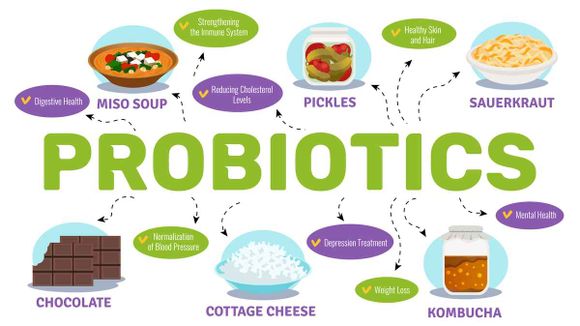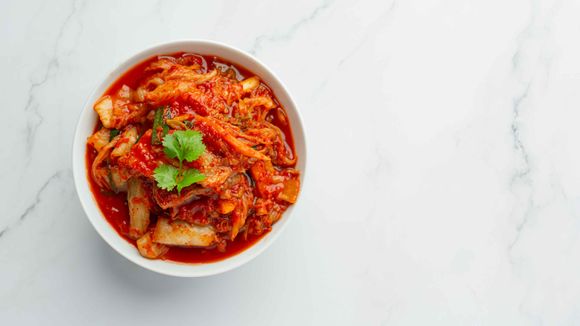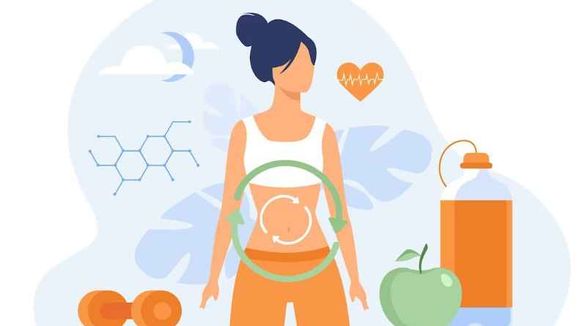Beneficial and harmful bacteria
The term microorganism refers to all types of microbes and bacteria. When we talk about the bacteria living in the intestinal tract of man, we usually sort them into two categories - beneficial bacteria and strains, namely non-pathogenic, and potential dangers, causative agents of diseases - pathogenic.
Beneficial bacteria keep pathogens under control, while delivering many health benefits. Bacteria leading to disease secrete proteins and toxic byproducts that can cause inflammation and unpleasant symptoms.
The balance between beneficial and harmful bacteria is important for maintaining health. Several factors can upset this balance, including diet, stress, and taking certain medications, most notably antibiotics. Today we will focus on good bacteria and their benefits, namely: 1
- They protect us against harmful bacteria and regulate the reactions of the immune system.
- Strengthen the tissues of the intestinal wall, support digestion and improve the absorption of nutrients.
- They contribute to the production of vitamins important for our health.
- Improve symptoms of viral infections and diseases.
- They help regulate weight and improve heart health.
What is the relationship between probiotics and prebiotics?
Probiotics are the good bacteria living in the human digestive tract. Their function is to break down and digest food. Support overall gut health and provide an immune response. They also play a key role in the emotional balance and mental state of a person. [ref. 1]
Gut bacteria can also improve the production and regulation of hormones, such as insulin and leptin. It has been found that thanks to probiotics, neurotransmitters such as serotonin, dopamine, are produced in the body, which affect our mood.
Prebiotics are food for good bacteria. In order for probiotics to exist that take care of our overall health, they also need an engine. Prebiotics come from the indigestible fiber in certain plant-based foods. They stimulate the growth and activity of bacteria beneficial to the body - probiotics. All prebiotics are fiber, but not all fiber is prebiotics.
Our bodies need both probiotics and prebiotics. They work together to support the microbiome. This is a synergistic relationship. Prebiotics are the fuel of probiotics.
Probiotics - Functions and Importance

The health of the human body and the balance of intestinal microflora are possible thanks to probiotics. Their role in digestion is indisputable. In gastrointestinal viruses, probiotics will be the first microorganisms in the human body to set about returning us to balance.
Probiotics also help with accumulated gas and bloating. They improve symptoms of irritable bowel disease, Crohn's disease, urinary tract infections, dysbacteriosis and other unpleasant conditions.
Improving the immune system with the help of probiotics in the body is much more effective. They have been shown to enhance the immune response and aid recovery after illness. Protect against bad bacteria, viruses, overgrowth of pests, fungi, yeast. For example, colonization of strains Streptococcus thermophilus and Lactobacillus acidophilus protect cells against infection with Escherichia coli (Escherichia coli). According to other studies, women taking Lactobacillus crispatus reduce the risk of urinary tract infections by 50%.
Probiotics can reduce the severity and duration of infectious diarrhea. When taking antibiotics, it is almost certain that we need to further strengthen the colonizations of probiotics, as antibiotics destroy not only harmful bacteria, but also beneficial ones. Very often, after taking strong medications, there are symptoms such as diarrhea, nausea, lack of energy and appetite.
However, not only the physical body is favored by the presence of probiotics. The intestinal microflora has a direct relationship with our mood. And it makes sense. If we don't feel well, how would we expect to feel emotional? The intestines are sometimes called the "second brain" of a person. The balance of bacteria in it directly affects mental health.
Among other benefits, increased strains of probiotics have a beneficial effect on blood pressure and maintaining optimal weight according to the individual case. Lactobacillus acidophilus and Bifidobacterium strains are most commonly studied, but Lactobacillus rhamnosus and Lactobacillus paracasei may actually inhibit fat storage.
Among the foods with the highest natural content of probiotics are sauerkraut, with freshly fermented sauerkraut being the most beneficial. In Kimchi (a traditional Korean food, again including fermented vegetables) many probiotic strains are also found.
Tempeh is a fermented soy product known in vegan circles and beyond. Miso heads Japanese cuisine as a product high in probiotics. Kefir and yogurt are well known in our lands and are a wonderful source of natural probiotics.
Consuming different types of foods high in probiotics can help us get the most benefits and the maximum number and variety of probiotic strains.

The most frequently studied probiotic strains
This group includes the following probiotic strains with beneficial health effects:
Bifidobacterium animalis
Typically, this probiotic is found in the environment and in the gastrointestinal tract of mammals. This type of probiotic is often associated with lowering cholesterol levels and improving constipation. This strain also helps maintain the strength of the intestinal wall.
Bifidobacterium bifidum
This probiotic is most commonly found in fermented foods and beverages. It is located in the gastrointestinal tract, where it has an extremely favorable state of human health. Together with Streptococcus thermophilus fight diarrhea.
Bifidobacterium longum
Both the previous strain and this one are most common in fermented beverages and foods, as well as in the gastrointestinal tract. It helps in the production of vitamins, including vitamin C and vitamins B1, B6 and B12. They can also help strengthen the intestinal barrier and prevent infections.
Lactobacillus acidophilus
This well-known probiotic strain has been studied for many decades for its health benefits and is often used in fermented dairy products. It is found in the human gastrointestinal tract, mouth and vagina. It shows effectiveness against bacterial infections in the vagina and reduces cholesterol levels. It also helps with bloating and gas.
Lactobacillus plantarum
This probiotic is colonized in the gastrointestinal tract and in the mouth. It has a very important application in the absorption of iron and can prevent its deficiency.
Lactobacillus reuteri
This probiotic plays a key role in gastrointestinal ailments, including the development of the digestive system in babies. It also helps with various types of fungal infections. Reduces diarrhea and increases the absorption of vitamin D.
Prebiotics
Prebiotics, as already mentioned, are the food and engine of probiotics. But they are also important as a stand-alone element. They have advantages, so it is important not to deprive ourselves of them.
Their main function is in the absorption of minerals. They have anti-inflammatory and immunostimulating effects. They contribute for controlling the levels of blood sugar. They also help with weight loss. The consumption of prebiotics gives us a feeling of satiety for a longer time. Prebiotics help the body absorb more magnesium, iron and calcium, and thus contribute to healthier nails, teeth and bones.
Prebiotics have been found in many places, but are particularly saturated in garlic (A. sativum), onion (Allium cepa), bananas (Musa), artichokes (Cynara cardunculus var. scolymus), apples (Malus domestica) and in oatmeal. Many leafy green edible plants are high in fiber and prebiotics. Chicory (Cichorium) is among the most saturated foods of prebiotics. [ref. 1]
Asparagus, rye, natural cocoa, flaxseed are also leaders in the content of prebiotics. A varied plant-based diet is almost certain to charge your body with enough fiber and prebiotics on a daily basis.








